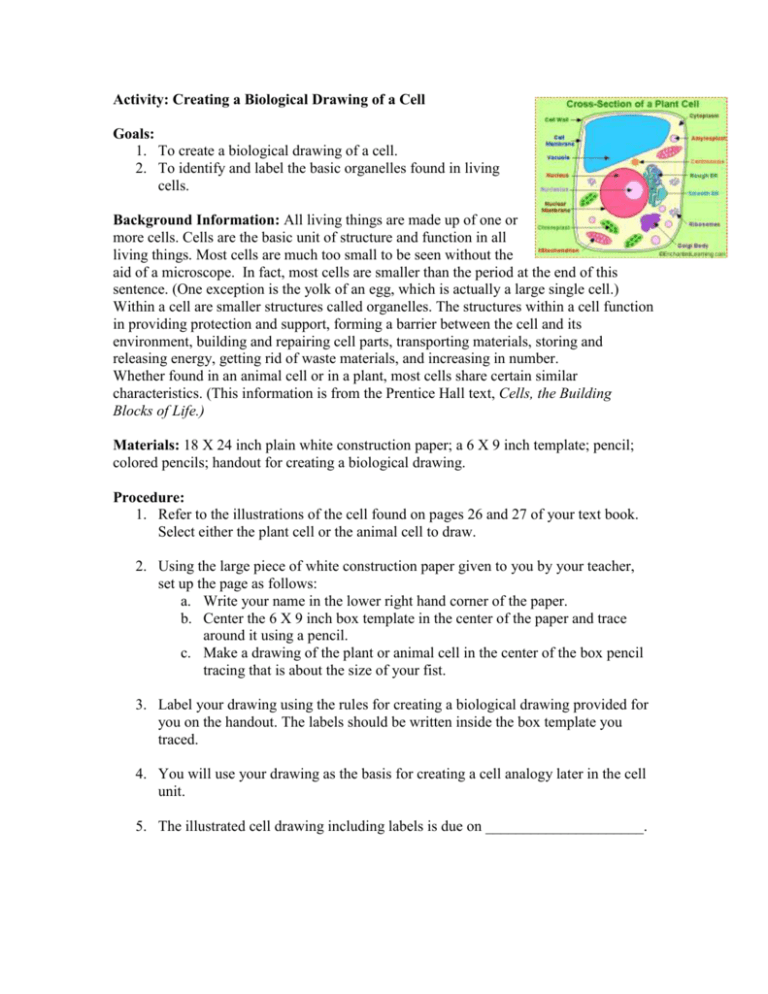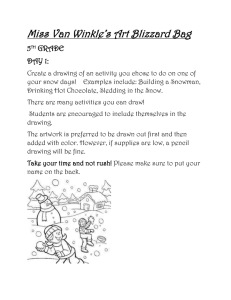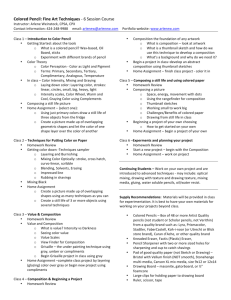Cell Drawing Activity: Biology Worksheet for Students
advertisement

Activity: Creating a Biological Drawing of a Cell Goals: 1. To create a biological drawing of a cell. 2. To identify and label the basic organelles found in living cells. Background Information: All living things are made up of one or more cells. Cells are the basic unit of structure and function in all living things. Most cells are much too small to be seen without the aid of a microscope. In fact, most cells are smaller than the period at the end of this sentence. (One exception is the yolk of an egg, which is actually a large single cell.) Within a cell are smaller structures called organelles. The structures within a cell function in providing protection and support, forming a barrier between the cell and its environment, building and repairing cell parts, transporting materials, storing and releasing energy, getting rid of waste materials, and increasing in number. Whether found in an animal cell or in a plant, most cells share certain similar characteristics. (This information is from the Prentice Hall text, Cells, the Building Blocks of Life.) Materials: 18 X 24 inch plain white construction paper; a 6 X 9 inch template; pencil; colored pencils; handout for creating a biological drawing. Procedure: 1. Refer to the illustrations of the cell found on pages 26 and 27 of your text book. Select either the plant cell or the animal cell to draw. 2. Using the large piece of white construction paper given to you by your teacher, set up the page as follows: a. Write your name in the lower right hand corner of the paper. b. Center the 6 X 9 inch box template in the center of the paper and trace around it using a pencil. c. Make a drawing of the plant or animal cell in the center of the box pencil tracing that is about the size of your fist. 3. Label your drawing using the rules for creating a biological drawing provided for you on the handout. The labels should be written inside the box template you traced. 4. You will use your drawing as the basis for creating a cell analogy later in the cell unit. 5. The illustrated cell drawing including labels is due on _____________________. Rules for a Biological Drawing The ability to draw accurately and neatly is a useful skill, especially in science. Most artists follow some basic rules to make their drawings attractive and easy to read. Below are some rules which will improve your drawing skills. 1. 2. 3. 4. Use unlined paper. Draw in pencil. Always print. Use shading techniques to create texture. If picture is seen in color, then use colored pencils. 5. Center the title and print it in capital letters. 6. Center the drawing on the page. 7. Use a ruler to draw labeling lines. 8. Never use the plural form of a word when pointing to a single object or part. 9. Do little or no erasing. 10.Include as much detail as possible. Caption: This protist is very irregular in shape and contains a nucleus, a vacuole, and a cell membrane.








